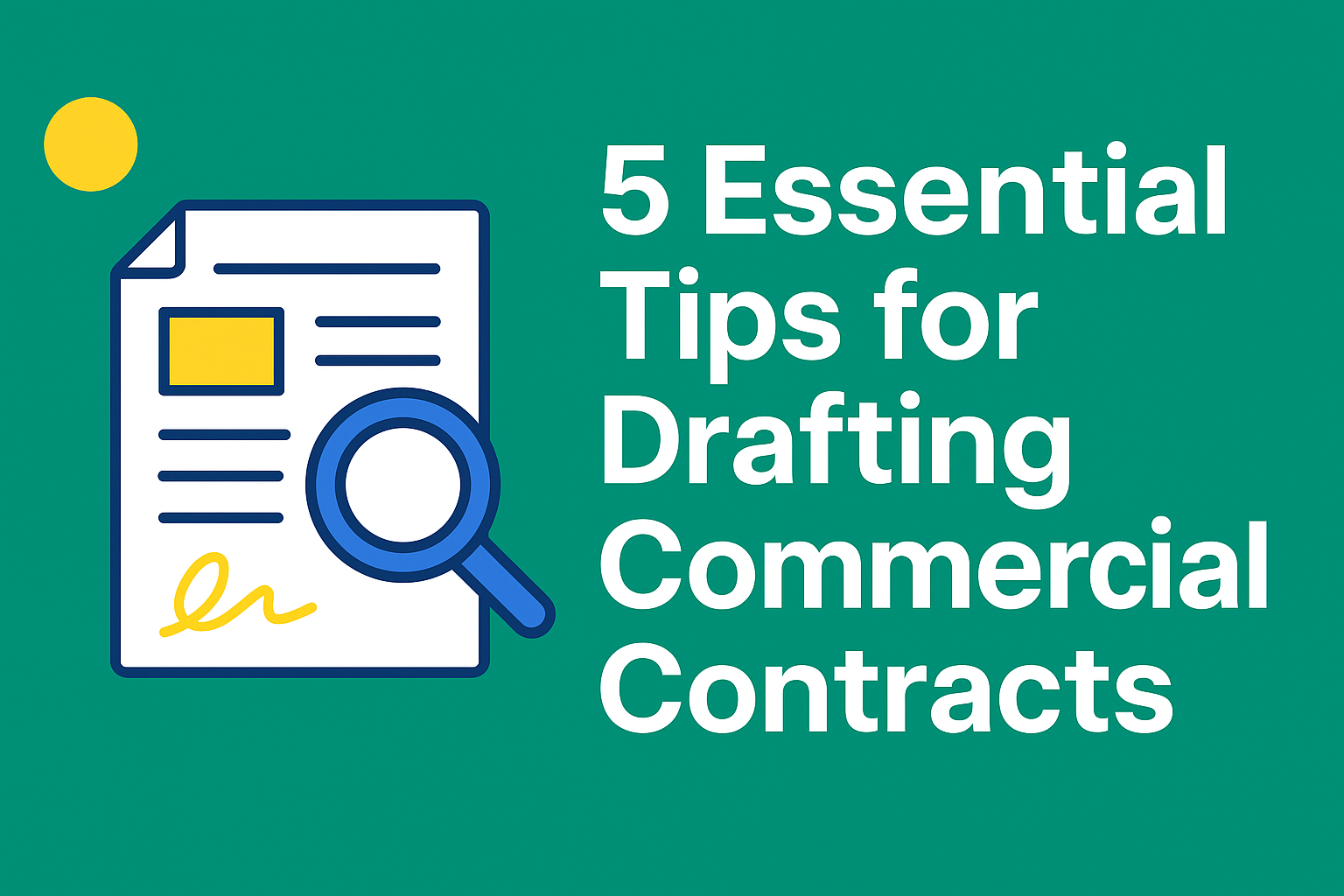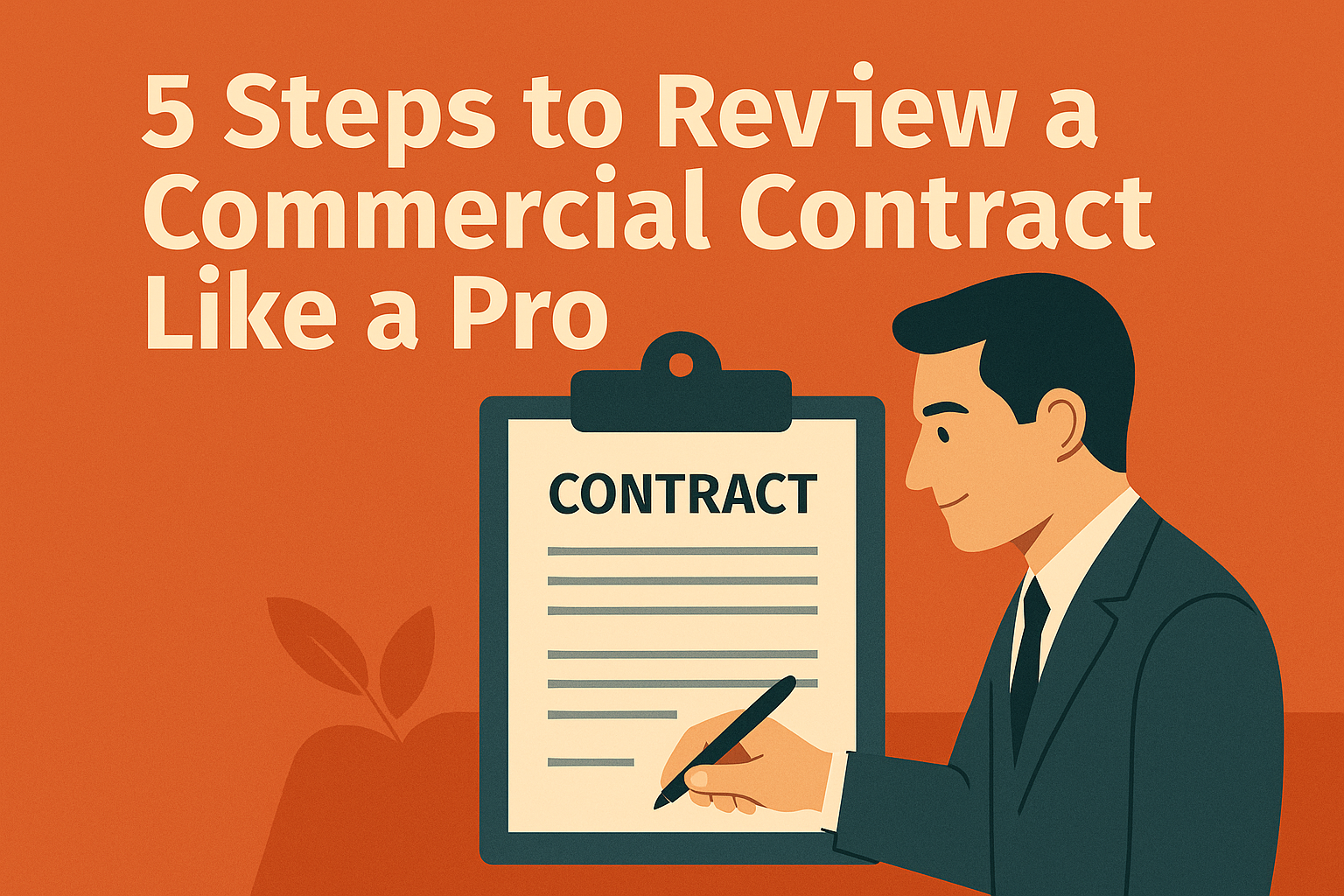
Blog
09/14/2025
3. Balance Precision With Readability
Contracts have to hold up in court…but they also need to be understood by the people who work with them every day. Overly complex drafting slows down reviews, creates unnecessary negotiation points, and makes the contract harder to enforce in practice.
The best drafting strikes a balance: precise enough to eliminate ambiguity, but plain enough to be read quickly and applied consistently. Think “clear and enforceable,” not “dense and impenetrable.”
Example: Instead of writing “the party of the first part shall hereinafter be responsible for the aforementioned obligations,” write simply: “The Vendor is responsible for these obligations” (and be sure to define “Vendor”). Both are legally valid, but only one invites confidence.
Pro tip: Read your contract aloud. If a sentence takes more than one breath, it’s probably too long. Short, direct clauses are easier to negotiate, and harder to misinterpret.
4. Anticipate Future Scenarios
A well-drafted contract doesn’t just capture today’s agreement; it prepares for what might happen tomorrow. Markets shift, teams change, and projects rarely unfold exactly as planned. Contracts that build in flexibility and contingencies can prevent minor hiccups from turning into major disputes.
Think about how the agreement ends and evolves, not just how it begins. What happens if deadlines slip? If the parties want to renew? If the relationship just doesn’t work out? If the regulatory landscape shifts during the term of the agreement? The answers should be clear in the document.
Example: A software services agreement might include a renewal option with 90 days’ notice, specify service credits for downtime, and spell out early termination rights if either side breaches key obligations. Those clauses don’t predict the future — but they make sure both parties know what happens if the future looks different than expected.
Pro tip: When obligations are outside the parties’ control or likely to change — like benchmark rates set by a third party, or specific personnel commitments — consider putting them in an addendum incorporated by reference. That way you can update the addendum as necessary instead of amending the entire contract.
5. Align Risk Allocation With Leverage
Every contract involves risk; the art is deciding who bears it. Strong drafting matches risk allocation to each party’s bargaining power and practical ability to manage that risk. Trying to push all risk onto the other side may look like a “win,” but it often backfires in negotiations or strains the relationship long-term.
Instead, think about fairness and practicality. If one party controls delivery timelines, they should also bear liability for delays. If the other party controls compliance with regulations, that’s where the warranty should sit. Aligning risks with control makes contracts both more enforceable and more sustainable.
Example: In a SaaS agreement, the vendor might indemnify the customer for IP infringement (since the vendor controls the code — especially relevant in the age of generative AI), while the customer indemnifies the vendor for misuse of the platform (since the customer controls how it’s used). Each side takes on the risks it can actually mitigate.
Pro tip: Risk allocation doesn’t just live in indemnities; it’s baked into definitions, payment structures, and performance obligations, too. Before finalizing the agreement, map the top risks in the deal (e.g., delivery failure, regulatory fines, IP disputes, data breaches, nonpayment). Then check that the party with the most control over each is also the party bearing the contractual responsibility.
Conclusion (For Now)
Drafting strong commercial contracts isn’t about cramming in as much legal jargon as possible. It’s about clarity, fairness, and foresight. By starting with the business deal, defining key terms up front, writing with readability in mind, anticipating future scenarios, and aligning risk with leverage, you set the stage for smoother negotiations and stronger business relationships.
But even the best drafters know: mistakes hide in the details. Undefined terms, inconsistent references, and misaligned risk allocations can sneak through when you’re juggling dozens of contracts under tight timelines. That’s where the right tools make all the difference.
BoostDraft helps legal and business teams track definitions and key terms across an agreement, catch inconsistencies early, and focus on the strategic work that drives deals forward. Faster reviews, fewer errors, and more confidence in the final contract.
The best contracts aren’t just well-written — they’re well-managed. And that’s where tech like BoostDraft helps turn drafting tips into everyday practice. Get a demo to see how — and keep an eye out for more pro tips from the contract experts at BoostDraft. In part two, we’ll dive into dispute resolution, governance, and technology-driven drafting practices.
Recent Post









